Filter by

Evolutionary Developmental Biology of Invertebrates 4 Ecdysozoa II: Crustacea
This multi-author, six-volume work summarizes our current knowledge on the developmental biology of all major invertebrate animal phyla. The main aspects of cleavage, embryogenesis, organogenesis and gene expression are discussed in an evolutionary framework. Each chapter presents an in-depth yet concise overview of both classical and recent literature, supplemented by numerous color illustrati…
- Edition
- -
- ISBN/ISSN
- 978-3-7091-1853-5
- Collation
- 41 b/w illustrations, 43 illustrations in colour
- Series Title
- -
- Call Number
- -
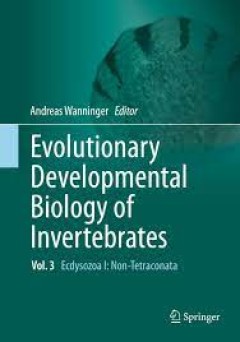
Evolutionary Developmental Biology of Invertebrates 3 Ecdysozoa I: Non-Tetra…
This multi-author, six-volume work summarizes our current knowledge on the developmental biology of all major invertebrate animal phyla. The main aspects of cleavage, embryogenesis, organogenesis and gene expression are discussed in an evolutionary framework. Each chapter presents an in-depth yet concise overview of both classical and recent literature, supplemented by numerous color illustrati…
- Edition
- -
- ISBN/ISSN
- 978-3-7091-1865-8
- Collation
- 14 b/w illustrations, 58 illustrations in colour
- Series Title
- -
- Call Number
- -
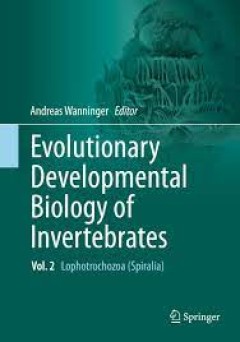
Evolutionary Developmental Biology of Invertebrates 2 Lophotrochozoa (Spiralia)
This multi-author, six-volume work summarizes our current knowledge on the developmental biology of all major invertebrate animal phyla. The main aspects of cleavage, embryogenesis, organogenesis and gene expression are discussed in an evolutionary framework. Each chapter presents an in-depth yet concise overview of both classical and recent literature, supplemented by numerous color illustrati…
- Edition
- -
- ISBN/ISSN
- 978-3-7091-1871-9
- Collation
- 12 b/w illustrations, 90 illustrations in colour
- Series Title
- -
- Call Number
- -
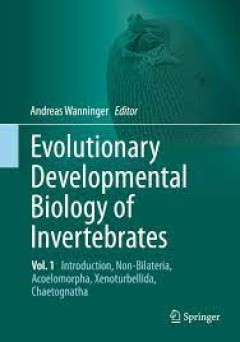
Evolutionary Developmental Biology of Invertebrates 1 Introduction, Non-Bila…
This multi-author, six-volume work summarizes our current knowledge on the developmental biology of all major invertebrate animal phyla. The main aspects of cleavage, embryogenesis, organogenesis and gene expression are discussed in an evolutionary framework. Each chapter presents an in-depth yet concise overview of both classical and recent literature, supplemented by numerous color illustrati…
- Edition
- -
- ISBN/ISSN
- 978-3-7091-1862-7
- Collation
- 21 b/w illustrations, 112 illustrations in colour
- Series Title
- -
- Call Number
- -
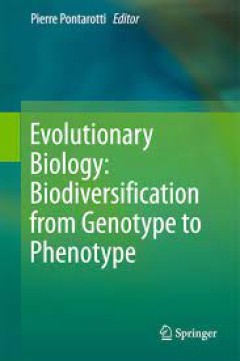
Evolutionary Biology: Biodiversification from Genotype to Phenotype
This book presents 20 selected contributions to the 18th Evolutionary Biology Meeting, which took place in September 2014 in Marseille. They are grouped under the following major themes: · Genotype to Phenotype · Genetic Mechanisms of Diversification · Evolutionary Mechanisms · Speciation and Biodiversity The aims of these annual meetings in Marseille …
- Edition
- -
- ISBN/ISSN
- 978-3-319-19932-0
- Collation
- 28 b/w illustrations, 40 illustrations in colour
- Series Title
- -
- Call Number
- -
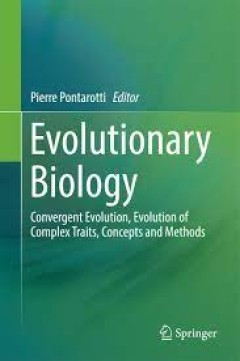
Evolutionary Biology Convergent Evolution, Evolution of Complex Traits, Conc…
This book presents selected contributions to the 19th Evolutionary Biology Meeting, which took place in September 2015 in Marseille. It consists of 22 chapters, which are grouped in four sections: · Convergent Evolution · Evolution of Complex Traits · Concepts · Methods The annual Evolutionary Biology Meetings in Marseille serve to gather leading evolu…
- Edition
- -
- ISBN/ISSN
- 978-3-319-41324-2
- Collation
- 14 b/w illustrations, 36 illustrations in colour
- Series Title
- -
- Call Number
- -

Molecular Mechanisms of Cell Differentiation in Gonad Development
This book presents the current state of knowledge on the origin and differentiation of cell lines involved in the development of the vertebrate male and female gonads with particular emphasis on the mouse. It also discusses the processes leading to the testis- and ovary-specific structures and functions. The individual chapters review the origin and differentiation of the somatic cells of th…
- Edition
- 1
- ISBN/ISSN
- 978-3-319-31971-1
- Collation
- XII, 434
- Series Title
- Results and Problems in Cell Differentiation
- Call Number
- -
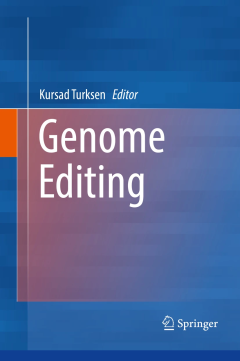
Genome Editing
This timely volume explores the use of CRISPR-Cas9 for genome editing, presenting cutting-edge techniques and their applications in treatment of disease. The chapters describe latest methods such as use of targetable nucleases, investigation of the non-coding genome, mouse genome editing, increasing of knock-in efficiency in mouse zygotes, and generation of reporter stem cells; the text context…
- Edition
- -
- ISBN/ISSN
- 978-3-319-34146-0
- Collation
- IX, 166
- Series Title
- -
- Call Number
- 570 GEN
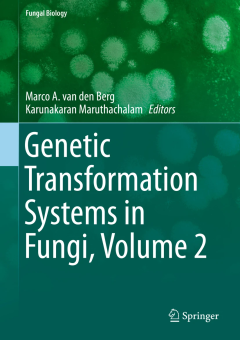
Genetic Transformation Systems in Fungi, Volume 2
Fungi are an economic very important class of microbes. Not only do they host a range of versatile enzymes used in industrial applications (biofuels, laundry, food processing), as well do they produce several very important pharmaceutical drugs (statins and penicillins). Moreover, fungal pathogens can cause great damage in agricultural production (Phytophthora and Botrytis) and during mammalian…
- Edition
- -
- ISBN/ISSN
- 978-3-319-10502-4
- Collation
- -
- Series Title
- -
- Call Number
- 571.6 Gen
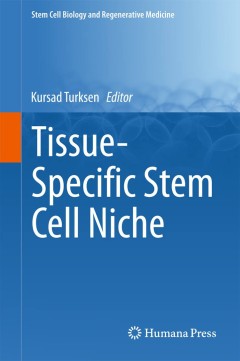
Tissue-Specific Stem Cell Niche
This timely volume explores tissue-derived stem cells, summarizing and evaluating the current body of knowledge. Sixteen chapters cover hematopoietic, osteoblast, skeletal, cardiac, pancreatic, epithelial, corneal, hepatic, renal, testicular, ovarian, fingernail, hair follicle and other stem cells- discussing their individual development, functions and pathologies, as well as the commonalities …
- Edition
- -
- ISBN/ISSN
- 978-3-319-21705-5
- Collation
- 4 b/w illustrations, 44 illustrations in colour
- Series Title
- -
- Call Number
- -
 Computer Science, Information & General Works
Computer Science, Information & General Works  Philosophy & Psychology
Philosophy & Psychology  Religion
Religion  Social Sciences
Social Sciences  Language
Language  Pure Science
Pure Science  Applied Sciences
Applied Sciences  Art & Recreation
Art & Recreation  Literature
Literature  History & Geography
History & Geography